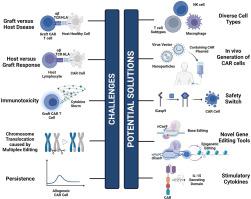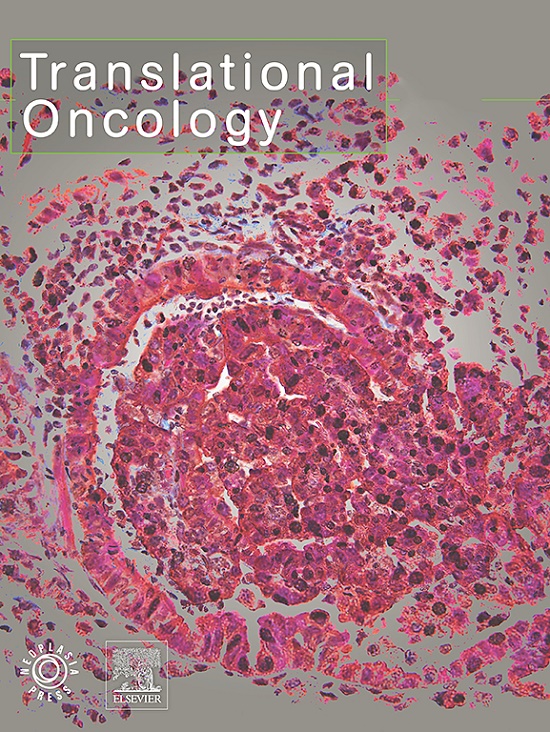Universal CAR cell therapy: Challenges and expanding applications
IF 5
2区 医学
Q2 Medicine
引用次数: 0
Abstract
Chimeric Antigen Receptor (CAR) T cell therapy has gained success in adoptive cell therapy for hematological malignancies. Although most CAR cell therapies in clinical trials or markets remain autologous, their acceptance has been limited due to issues like lengthy manufacturing, poor cell quality, and demanding cost. Consequently, “Off-the-shelf”, universal CAR (UCAR) cell therapy has emerged. Current concerns with UCAR therapies revolve around side effects such as graft versus host disease (GVHD) and host versus graft response (HVGR). Preclinical research on UCAR cell therapies aims to enhance efficacy and minimize these side effects. Common approaches involve gene editing techniques to knock out T cell receptor (TCR), human leukocyte antigen (HLA), and CD52 expression to mitigate GVHD and HVGR risks. However, these methods carry drawbacks including potential genotoxicity of the edited cells. Most recently, novel editing techniques, such as epigenetic editing and RNA writer systems, have been developed to reduce the risk of GVHD and HVGR, allowing for multiplex editing at different sites. Additionally, incorporating more cell types into UCAR cell therapies, like T-cell subtypes (DNT, γδT, virus-specific T cells) and NK cells, can efficiently target tumors without triggering side effects. In addition, the limited efficacy of T cells and NK cells against solid tumors is being addressed through CAR-Macrophages. In summary, CAR cell therapy has evolved to accommodate multiple cell types while expanding applications to various diseases, including hematologic malignancies and solid tumors, which holds tremendous growth potential and is promised to improve the lives of more patients in the future.

通用 CAR 细胞疗法:挑战与应用拓展
嵌合抗原受体(CAR)T 细胞疗法在血液恶性肿瘤的采用性细胞疗法中取得了成功。尽管临床试验或市场上的大多数 CAR 细胞疗法仍然是自体细胞疗法,但由于制造时间长、细胞质量差和成本高昂等问题,它们的接受程度受到了限制。因此,"现成的 "通用 CAR(UCAR)细胞疗法应运而生。目前对 UCAR 疗法的担忧主要集中在副作用上,如移植物抗宿主疾病(GVHD)和宿主抗移植物反应(HVGR)。有关 UCAR 细胞疗法的临床前研究旨在提高疗效并尽量减少这些副作用。常见的方法包括基因编辑技术,以敲除 T 细胞受体 (TCR)、人类白细胞抗原 (HLA) 和 CD52 的表达,从而降低 GVHD 和 HVGR 风险。然而,这些方法都存在缺陷,包括编辑细胞的潜在遗传毒性。最近,人们开发了新型编辑技术,如表观遗传编辑和 RNA 写入系统,以降低 GVHD 和 HVGR 风险,并可在不同部位进行多重编辑。此外,在 UCAR 细胞疗法中加入更多细胞类型,如 T 细胞亚型(DNT、γδT、病毒特异性 T 细胞)和 NK 细胞,可有效靶向肿瘤,且不会引发副作用。此外,T 细胞和 NK 细胞对实体瘤的疗效有限,这一问题正在通过 CAR 巨噬细胞得到解决。总之,CAR 细胞疗法已发展到可容纳多种细胞类型,同时将应用范围扩大到包括血液恶性肿瘤和实体瘤在内的各种疾病,具有巨大的发展潜力,有望在未来改善更多患者的生活。
本文章由计算机程序翻译,如有差异,请以英文原文为准。
求助全文
约1分钟内获得全文
求助全文
来源期刊

Translational Oncology
ONCOLOGY-
CiteScore
8.40
自引率
2.00%
发文量
314
审稿时长
54 days
期刊介绍:
Translational Oncology publishes the results of novel research investigations which bridge the laboratory and clinical settings including risk assessment, cellular and molecular characterization, prevention, detection, diagnosis and treatment of human cancers with the overall goal of improving the clinical care of oncology patients. Translational Oncology will publish laboratory studies of novel therapeutic interventions as well as clinical trials which evaluate new treatment paradigms for cancer. Peer reviewed manuscript types include Original Reports, Reviews and Editorials.
 求助内容:
求助内容: 应助结果提醒方式:
应助结果提醒方式:


